Although the work is special and hard, the people working in meteorology and hydrology in Hai Duong province are always silently and diligently measuring the "sunshine and rain" to serve production and people's lives.
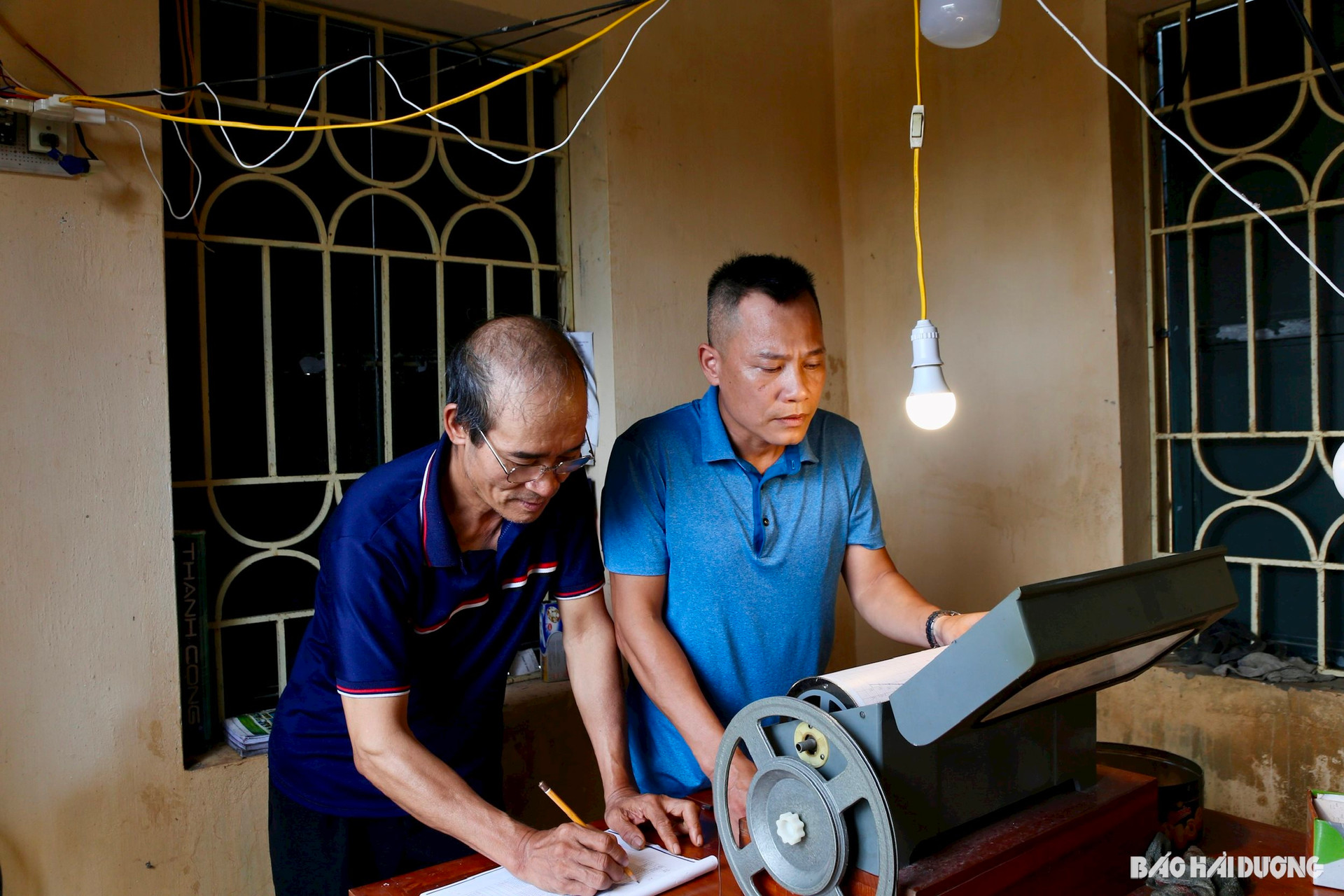
Stressful response to storms and floods
The water level of the Thai Binh River has just receded after days of tension at an alarming level, and Mr. Vu Van Hau (born in 1993), Head of the Phu Luong Hydrological Station (Hai Duong City) is busy cleaning up the measuring line leading to the automatic water level measuring well near the riverbank. When I met him, Mr. Hau was still covered in mud. After more than a week of working under pressure, Mr. Hau's face was still radiant. He had to take advantage of the high tide to clear the layer of mud as thick as his arm. After noon, when the tide was low, Mr. Hau went to the work area, quickly ate rice, then hugged his computer, calculated, and updated the water level data.
Mr. Hau has worked at Phu Luong Hydrological Station for more than 8 years, but his love for hydrology has been nurtured and cultivated since he was only 5 years old. His mother is also a professional. Because of the nature of his job, he often has to work on duty, so she often takes him to the station to take care of him. Over time, the tools and structures associated with hydrology such as measuring rulers, measuring machines, measuring wells, etc. have become familiar to Mr. Hau. Holding a bachelor's degree in meteorology, Mr. Hau enthusiastically returned to work at the Hai Duong Province Hydrometeorological Station. However, there is a huge gap between his childhood dream career and the actual pressure of work, which requires effort to overcome.
Working regardless of office hours, holidays or Tet, Mr. Hau has never taken a single leave since taking up his job at Phu Luong Hydrological Station. The station has 2 staff members, each shift lasts 24 hours. During special weather conditions, the entire staff must be on duty. In addition to Mr. Hau, the station also has 1 female employee, but because she is old, she often supports her. Therefore, Mr. Hau's time for his family is even more limited.
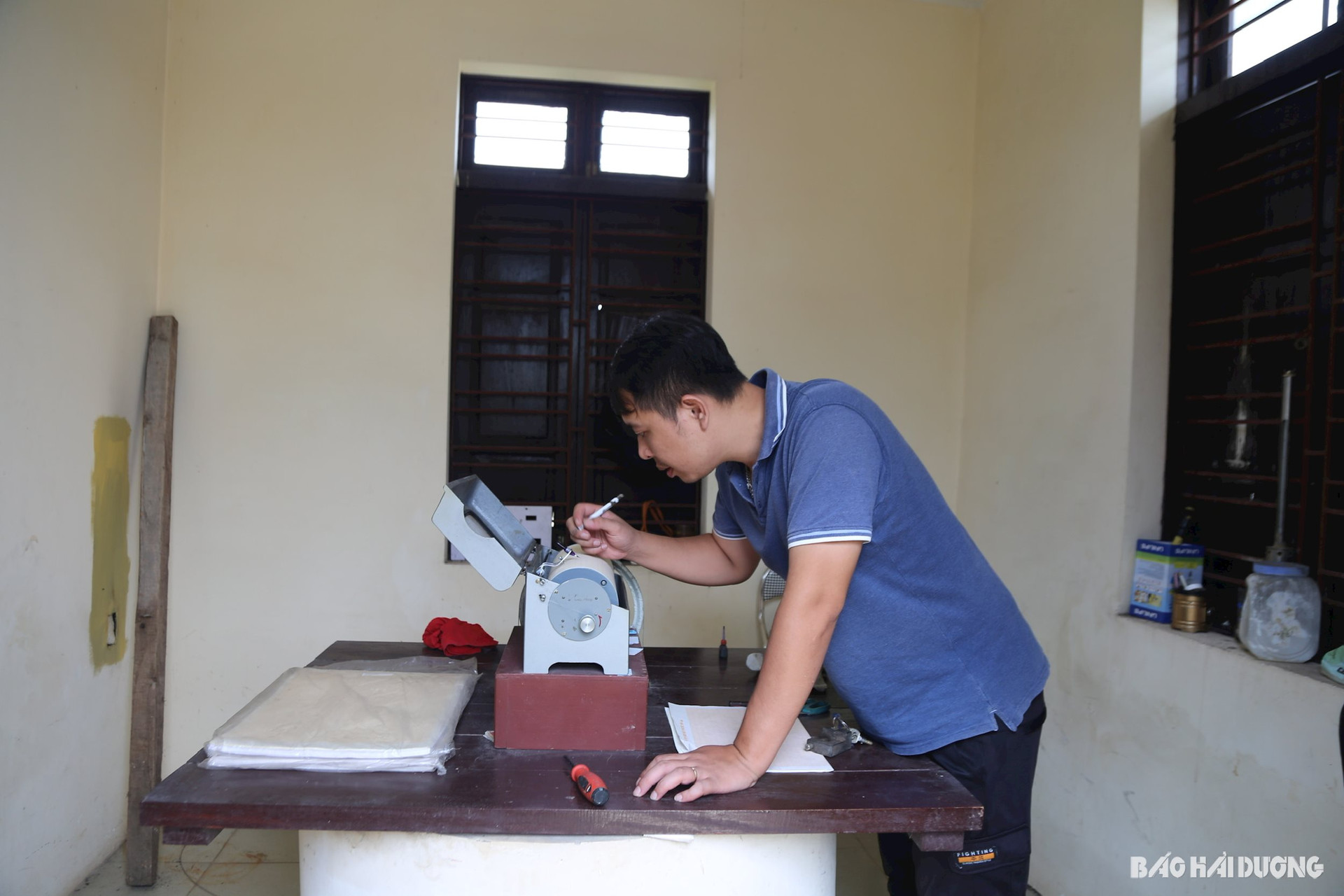
Phu Luong Hydrological Station is located outside the right bank of the Thai Binh River. On days when the weather is not unusual, Mr. Hau is responsible for monitoring the water level 4 times a day at 1, 7, 13 and 19 o'clock. When there is a flood warning, the frequency of data collection is more frequent, every 2 hours, 1 hour and then 30 minutes. The collected data must be immediately transmitted to the Provincial Hydrometeorological Station for information and forecasting purposes.
Storm No. 3 and the flood after the storm were extremely memorable experiences for Mr. Hau. The station was located alone on the riverbank, the strong wind caused a power outage, making it impossible for him to get data from the automatic meter and had to measure manually. The power went out, the waves were unstable, and his phone ran out of battery. Not caring about the danger of the storm, Mr. Hau ran to the residential area to ask for help. Then when the water level of the Thai Binh River rose, it was close to the dike. Although Mr. Hau was tall, he still waded in at his waist. He had to grope his way to the riverbank to get the actual water level. The flood was at level 3, and he had to report the water level every 30 minutes. So when he returned, entered the data, and didn't have time to change his clothes, he went back to the well to measure. The pressure and stress piled up, but Mr. Hau remained optimistic. He jokingly said: "During the last flood, I lost 4 kg because I was so busy, I only ate one meal a day. I worked hard on my normal days but it didn't work."
If the hydrological sector is mostly undertaken by men, the meteorological sector is mainly undertaken by women. The Chi Linh Meteorological Station is located on a hilltop in Sao Do Ward. The three female staff members who look after and operate the station are all women. The reason the station is isolated is to reduce external factors affecting the parameters of temperature, humidity, and rainfall. Their daily job is to update data and transmit it to the central station to serve the purpose of informing and forecasting the weather situation. It sounds simple, even a bit boring, but if you are not patient enough, it will be difficult to stick with the profession.
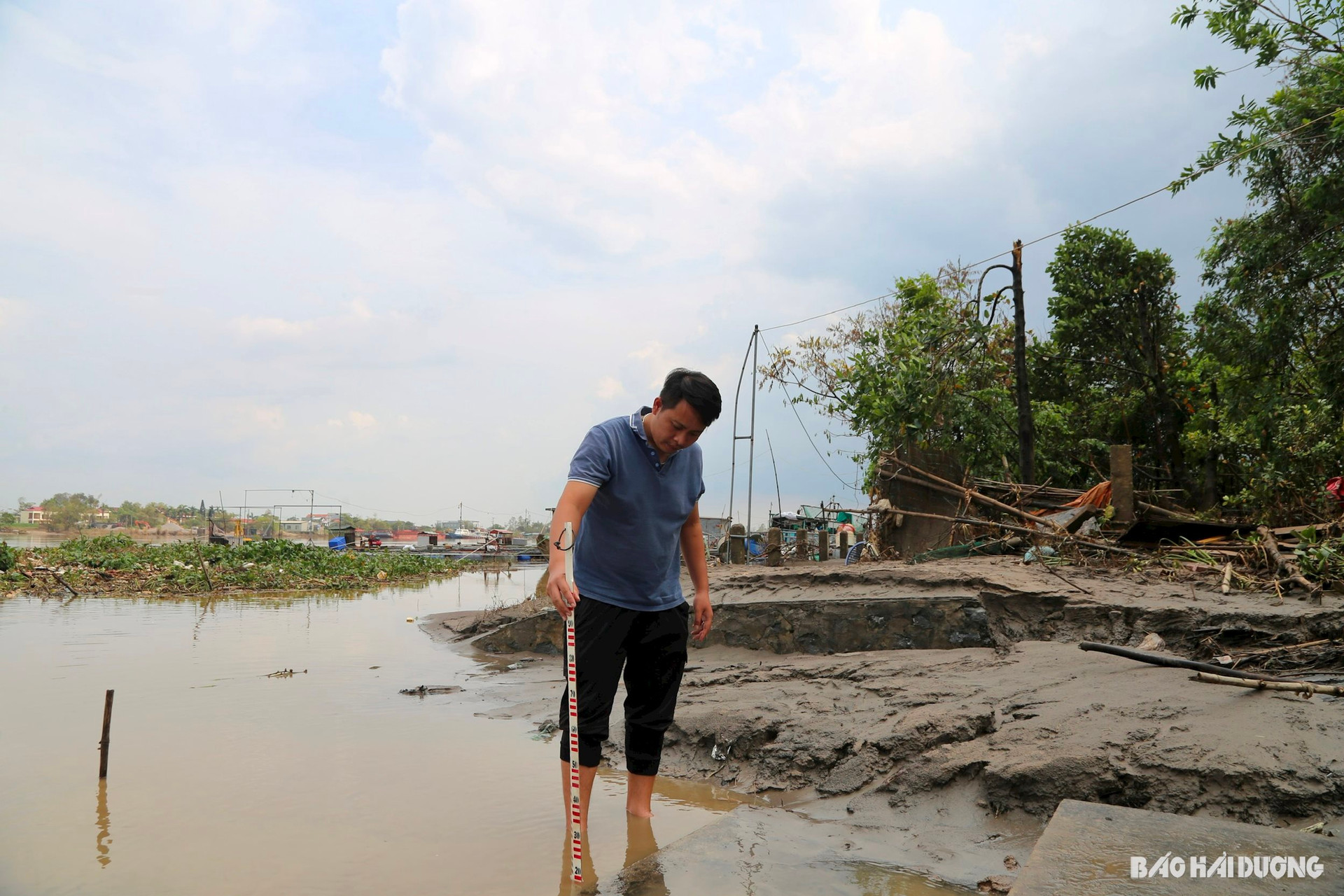
Ms. Nguyen Thi Thuy Dung (born in 1994) is the youngest member of the station. Originally from Ba Vi district (Hanoi), after graduating from university, Ms. Dung was assigned to the Chi Linh Meteorological Station. In the first days at the station, she felt a bit bewildered and lost. She shared: “The station is far from residential areas so it is boring, and working at night is also worrying and insecure. Sometimes the sisters are shocked by uninvited guests such as snakes, centipedes... However, after a while, they get used to it, and once they get used to it, they become attached and it is difficult to leave.”
Ms. Dung returned to Hai Duong to start a career and then settled down here. Because of the different jobs, she had to balance her time between housework and office work. The 24-hour shift for those who are wives and mothers sometimes made Ms. Dung impatient. However, she always reminded herself never to be negligent or careless. Even a small mistake or delay in collecting information would distort the data, affecting the forecast. Therefore, before the observation time, Ms. Dung had to carefully and meticulously check the measuring equipment. As a science, in principle, it is not allowed to be evaluated based on feelings. However, meteorologists still flexibly apply scientific knowledge and practical experience to make judgments.
Happy, sad with the job
The provincial Hydrometeorological Station has 2 meteorological stations and 7 affiliated hydrological stations. The task of the stations is to collect and process raw data on meteorological and hydrological situations, serving weather forecasting. Although playing an important role and providing effective support to other sectors and fields, meteorologists and hydrologists are always concerned with their own concerns. There are happy and sad stories that only those in the profession can understand, share and sympathize with each other.
Mr. Nguyen Kim Sy (born in 1965) has been attached to Ba Nha Hydrological Station (Thanh Ha) for more than 36 years. Therefore, Mr. Sy understands and experiences all the difficulties and hardships of the job. Being old, the job of working at night is even more dangerous during the storm and flood season, sometimes Mr. Sy also wants to retire so that the younger generation can contribute. However, that thought is only fleeting and makes him even more motivated to continue loving the job and sticking with the station.
Mr. Sy confided: “Over the years in the profession, I have witnessed changes in the meteorology and hydrology industry, but that is still not enough to meet the demands of society, especially when climate change is increasingly complex and unpredictable. I always hope that the industry will receive more attention and investment to improve forecasting capacity as well as create favorable conditions for our colleagues in their work.”
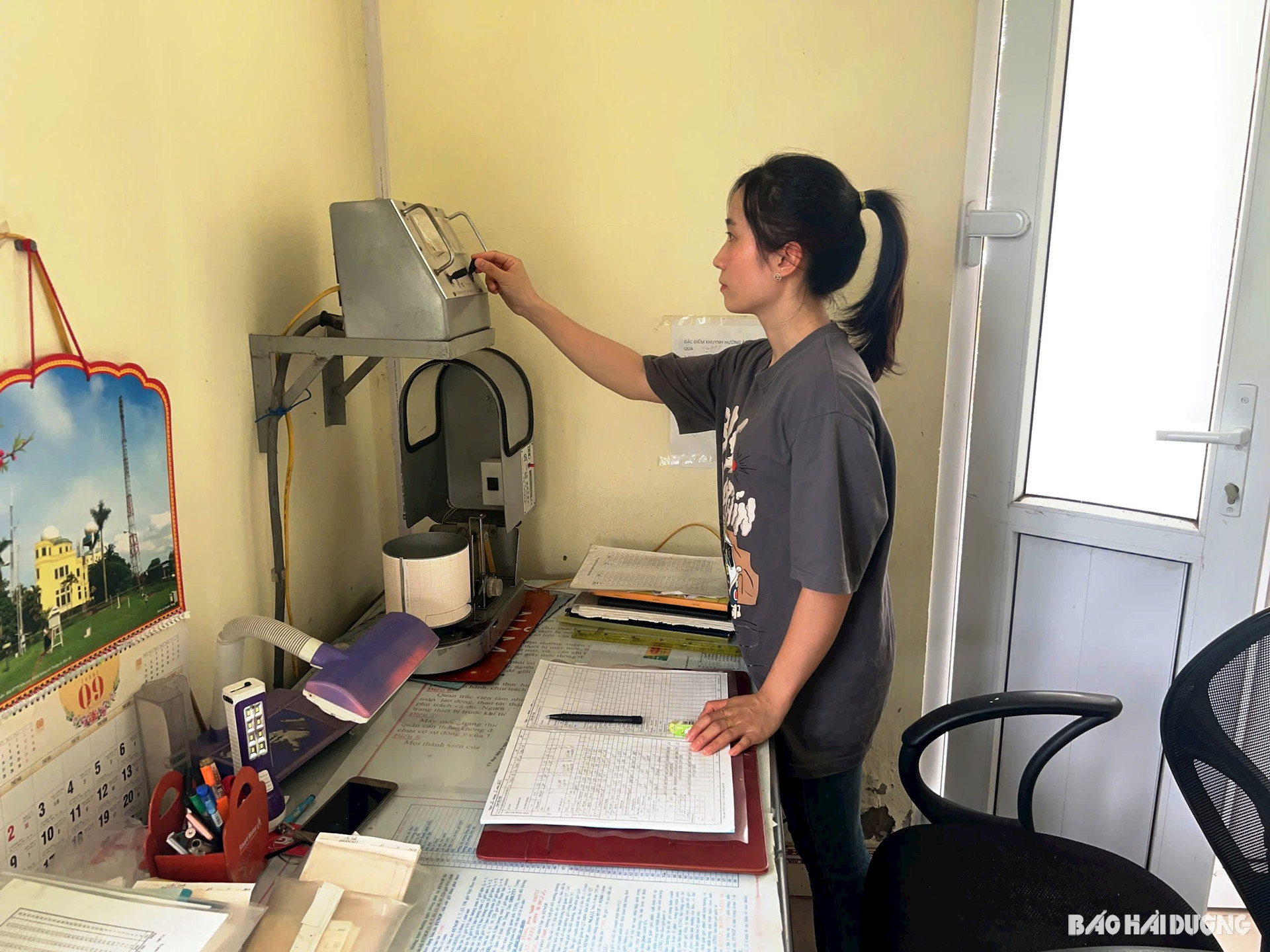
Following Mr. Sy, Mr. Nguyen Huy Tu, Head of Ba Nha Hydrological Station also confided: “Sometimes we are very worried because some people still do not know or understand everything about meteorological and hydrological work. Not only is it hard and dangerous, but it is also stressful because behind it are calculations and socio-economic development plans based on weather data. Any profession has its own difficulties, but in this profession, in addition to courage and intelligence, there must be dedication and passion.”
The Ba Nha Hydrological Station is a frontline station, so in addition to measuring water levels, the station also has the task of measuring rainfall, flow velocity, salinity, sediment ratio, etc. The work is more than other stations, so everyone has to make an effort to send accurate and timely information to the center. In the recent storm No. 3, the station was blown away by more than 200 m.2roof, rainwater flooded into the workplace. Everyone was worried, but the top priority was to update the river water level. The difficulties caused by natural disasters did not dampen the working spirit of the station staff.
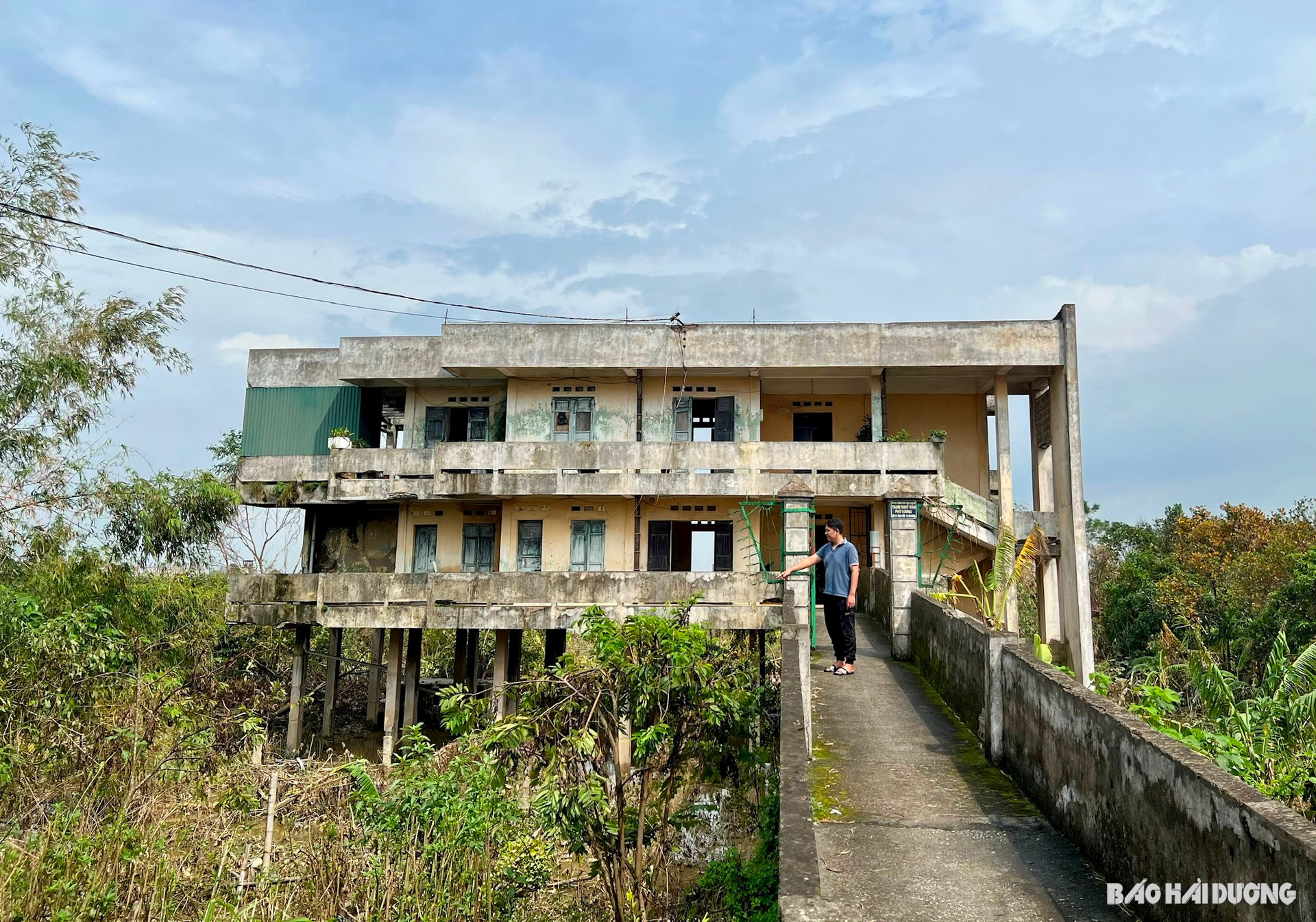
Putting aside material concerns, meteorologists and hydrologists also lack spiritual resources. Due to the nature of their profession, they rarely interact with the outside world. However, above all, they remain steadfast, confident and attached to hydrological wells and meteorological gardens. Currently, the meteorology and hydrological profession is under increasing pressure due to the emergence of many extreme weather phenomena while meteorological and hydrological stations in many places have degraded, somewhat affecting their professional work and daily life.
Phu Luong Hydrological Station, built in 1992, “trembled” in the recent storm No. 3. Layers of moss-covered concrete peeled off, revealing steel reinforcements, making everyone feel uneasy. Mr. Hau’s resolute words made everyone feel heavy-hearted: “We are not afraid of hardship or difficulty, but we always wish for a more spacious and safe workplace.”